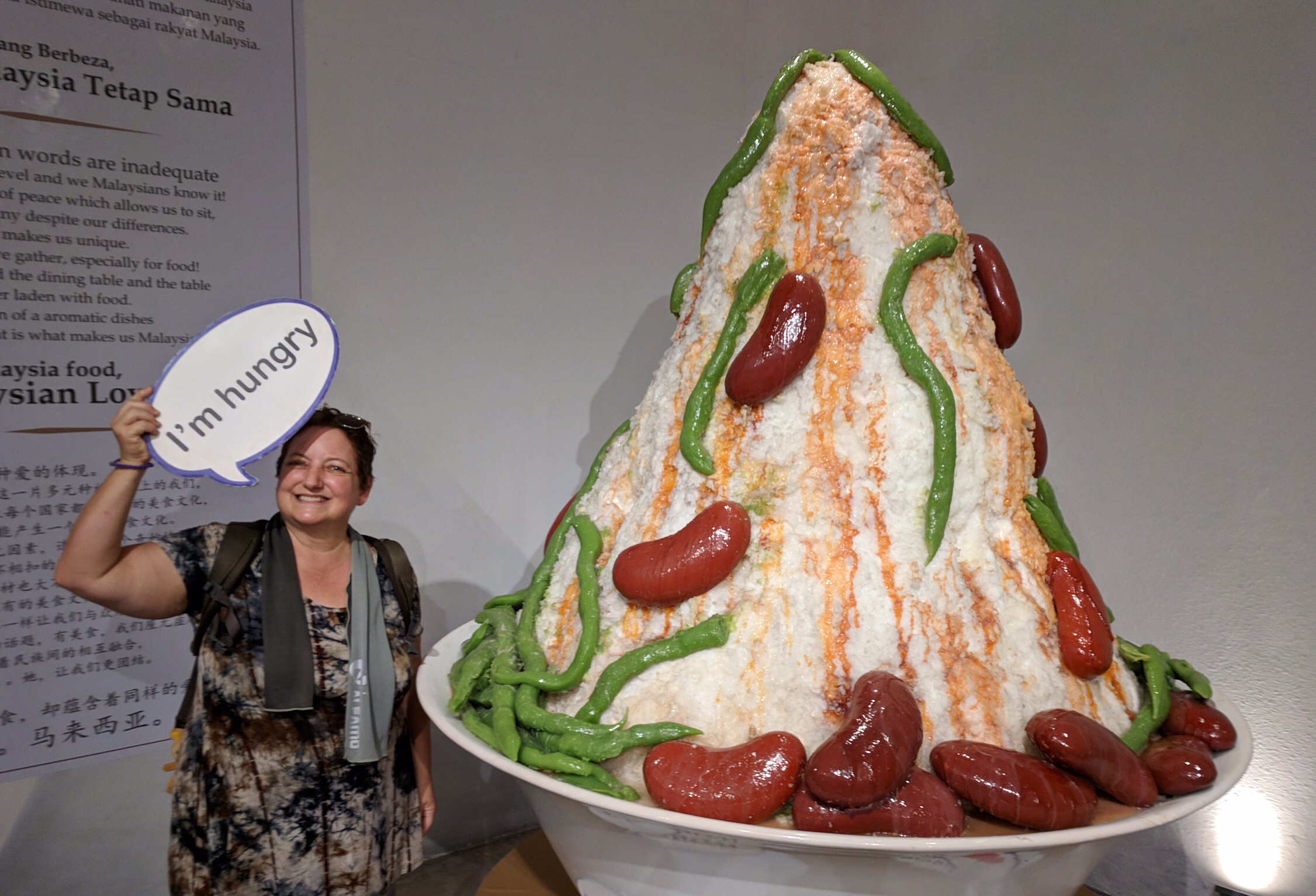Our next stop was Melaka, which was OK, but not great. We were there at Christmas, and went to the Portuguese area to check out their holiday lights, which they take pretty seriously, but nothing like some places in the states.
Good parts about Melaka:
- Excellent hawker food. We tried most of the savory items in that article. Favorites where #4, #6, and #11.
- Very nice boat tour, and nice just hanging out along the river
- We saw a fun band on Christmas from Australia/Greece, based in Berlin, called ‘The Zap Show‘.
Not-so-good parts:
- Horrible traffic (it was peak season, but taxi drivers said its always bad)
- Really annoying bicycle rickshaws blaring bad music really loud (photo below)
- A huge number of mediocre museums. They really need to update some of these. There was an exhibit on international body modifications (feet binding, lip plates, etc.) that was quite interesting tho.
Overall Melaka is worth stoping for a couple days maybe if you are nearby, but skip-able.
Collection of photos is here.
After Melaka we went to Kuala Lumpur (locals just call it KL) for New Years Eve. Since this was the first modern international city we’ve been in since Osaka, we decided to branch out from local food, and went out for an amazing sushi dinner one night, and a nice Peruvian dinner another night. The sushi at Hanaya was the best I’ve had outside of Tokyo, and our ‘chef’s choice’ included some unusual items such as Yakogai, Akagai, and Shirako, and some favorites such as Aji and Otoro.
We went to watch the NYE fireworks in the park next to the twin towers. The fireworks were only 10 minutes long, and not particularly impressive, but the atmosphere in the park was great.
KL has the largest bird park in the world, which was really cool (see photos), and some excellent museums. There is some really nice modern architecture in KL too.
We stayed in a great, but odd, AirBNB ($57/night). We had 2 bedroom, 2 bathroom apartment on the 16th floor with great views and a fantastic huge swimming pool in a former Ramada Inn, that was currently being used for corporate short term rentals. All the parts of the hotel that used to be restaurants, bars, meeting rooms, etc were boarded up, and the place had a bit of a post-apocalyptic feeling, but the inside of the room was super nice.
Collection of KL photos is here. KL is definitely worth a few days if you are in the vicinity.



















